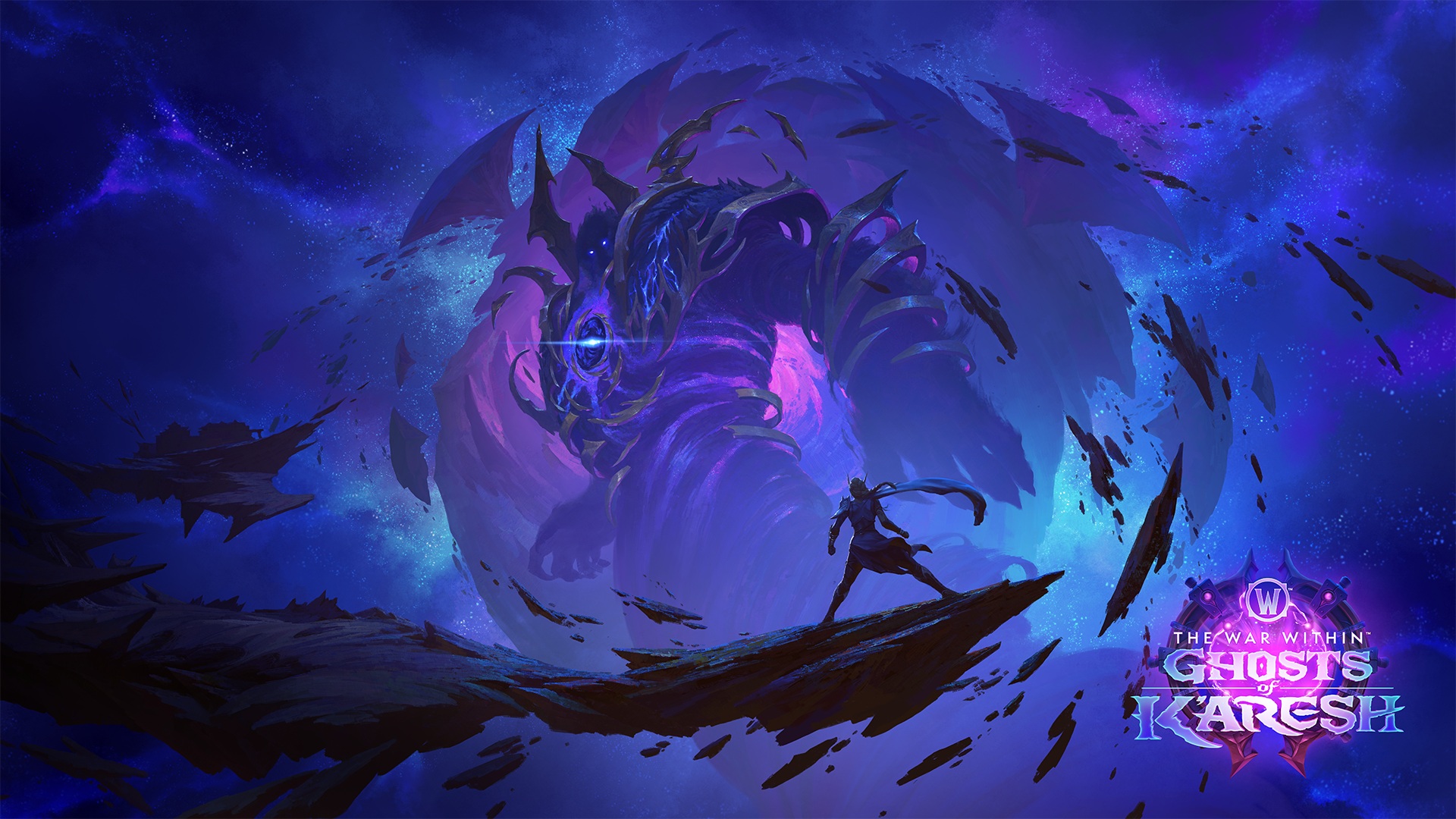Warcraft: Collector’s Bounty
The Collector’s Bounty event in patch 11.1 was certainly interesting. Boosting drop rates of rare mounts (and doubling transmog loot drops) by 5% meant a mount that might drop once every 200 runs was suddenly, if my maths is right, dropping every 20.
This had Blizzard’s desired consequence of sending everyone into every old raid and dungeon with a rare mount drop, completely destroying M+ and Raiding numbers for the duration.
Running four characters through old and new Karazhan, Firelands, and Tempest Keep led to me adding OG Midnight, Ashes of Al’ar, Flametalon of Alysrazor, and the Smoldering Egg of Millagazor. I jumped into Zul’Gurub and picked up a Swift Zulian Panther for good measure.

Lucky night
The only things that didn’t drop despite trying were the new Midnight from Legion Kara, and Sharkbait from Freehold.
All of this was terrific! Mounts for everyone!
Except.
Except I almost feel embarrassed to use the Ashes of Al’ar. There are people who spent actual years trying to get this to drop, and deserved the awestruck looks when Al’ar took to the sky (those skytrails!). Similarly with the pair of Firelands mounts: they’re so ostentatious that it feels cruel to have received them so easily.
This is of course fairly ridiculous, given modern Warcraft’s predilection for giving away things once considered precious. I suppose it’s an interesting psychological study: guilt about getting something too easily. And I was genuinely pleased for a guild friend who had run hundreds of weekly Icecrown Citadel runs to finally be able to mount Invincible; genuinely deserved.
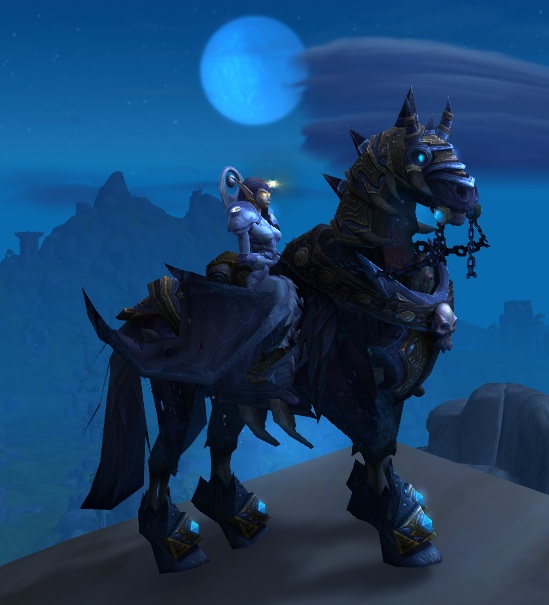
Invincible
For now I’ll stick with my lovely Onyx Netherwing Drake, hard earnt during Burning Crusade by throwing hundreds of boots at hapless peons.
Warcraft: Décor for the Dead
It’s fair to say the incoming player housing update for Warcraft has caught near everybody by surprise with how sophisticated and thorough it appears to be—this is no half-baked feature.
One thing that caught my eye in the Blizzard post about interior decorating was that there would be meta-specific décor on offer:
One thing we’d like to give you a heads up about here is that we intend to offer décor rewards for past expansion “meta-achievements” (A World Awoken, Back from the Beyond, and A Farewell to Arms are the three currently available). If you think you might be a décor completionist, it’s worth starting these in your downtime!
I’d recently finished off the Dragonflight meta when this was announced and enjoyed it so this was a klaxon call to try the remaining two.
As mentioned in the last post, Battle for Azeroth seemed too high a mountain, but I was pleased to find I was had completed around 75% of the Shadowlands meta. So back to the land of the dead I went.
Shadowlands has been much maligned, sometimes deservedly so, but I have been pleasantly surprised revisiting it. That’s probably largely because the majority of the grinds were behind me, but it really was an impressively content-full expansion—maybe too much content.
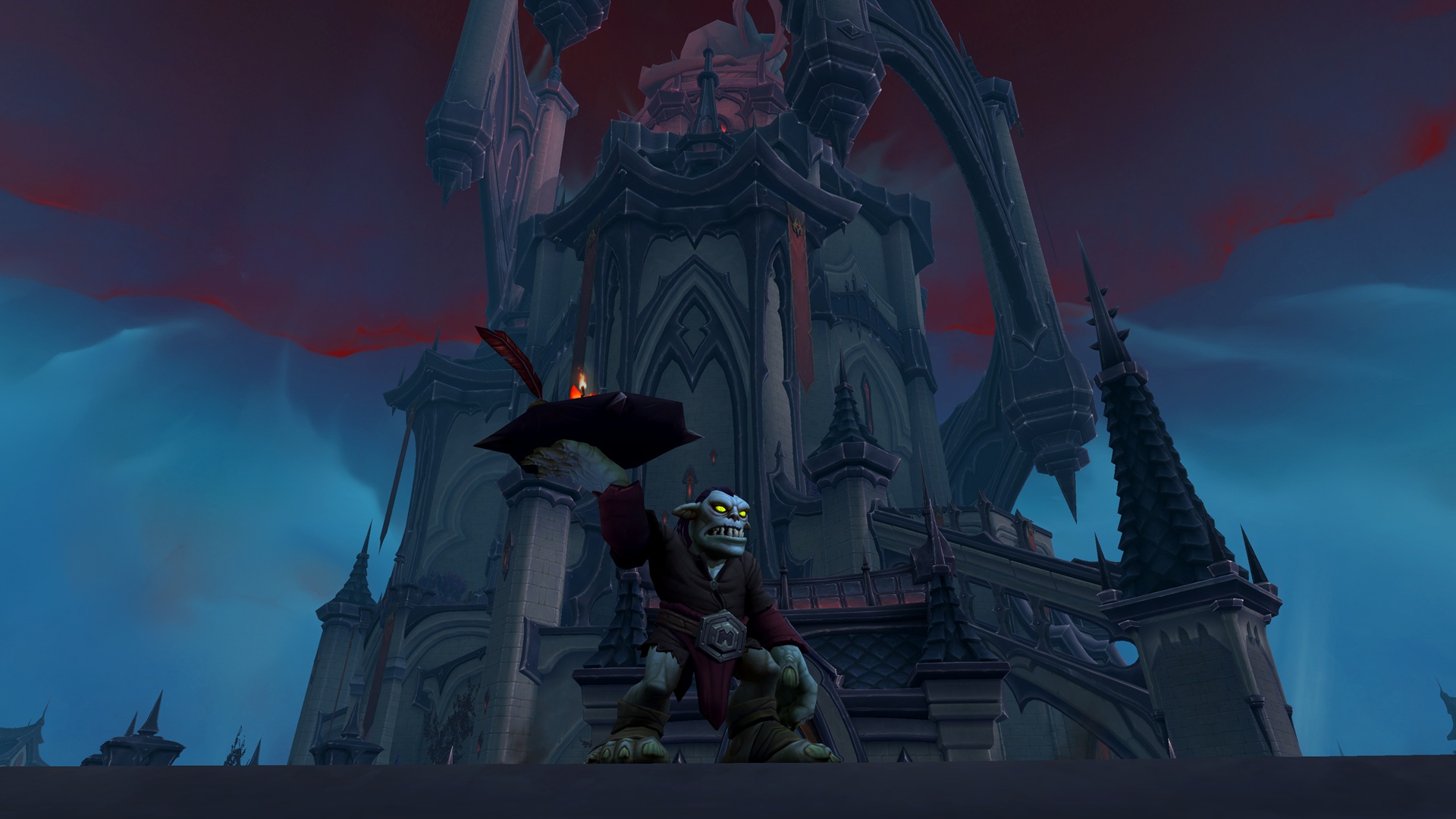
Four full zones on launch, each with a completely self-contained and unique aesthetic, plus Oribos, and the dreaded Maw and Torghast. The patches brought more still with Korthia and Zereth Mortis. Within each zone there is an entire standalone storyline (that occasionally cleverly meshes with the others) that has its own very distinct flavour. Each of the zone Covenants then have their own game-within-a-game, from the Ember Courts of the Venthyr to the Stitching of the Necrolords. It’s overwhelming and quite different to the far more streamlined and less individual zones we got with Dragonflight and now The War Within.
I found that my main characters naturally fell into a matching Covenant, which I’m sure is by design. Rogues to Revendreth, Warriors Maldraxxus, Hunters in Ardenweald, and Paladins to Bastion (of course). When I swapped my Paladin to Necrolord it felt so wrong I had to swap back and wheel out my Warrior instead. I imagine all classes felt drawn to a specific Covenant, which speaks to the cleverness of the design.
The raids are some of the best I’ve played; Castle Nathria is near perfect as a Gothic Chapel, and Sepulcher has several of the most iconic bosses in Warcraft history (looking at you Anduin and Halondrus).
Going back the Maw made me re-evaluate what Blizzard accomplished there. It feels like a legitimate and interesting take on what a hellish Warcraft Limbo would be like, without being simply fire and brimstone (though there is plenty of that). A river of lost souls, towering constructs, bizarre creatures and punishing landscapes. Even Torghast has moments, particularly when you can one-shot your way through everything. They really tried to do something different and I think it works.
Dragonflying everywhere makes questing much more tolerable; it shrinks the world significantly and that’s important, because one of the real drawbacks of Shadowlands is the amount of zone-to-zone travel that is required. Some of the daily quests would send you to all four zones, forcing you to travel through Oribos each time. There is an awful lot of waiting.
Another thing you need an awful lot of for the meta is Anima and Lost Souls. Thankfully I had a cache of Anima on my Paladin main which could be freely transferred (after Blizzard fixed the woeful Covenant locks that Shadowlands launched with), because having to grind thousands would probably have sunk this mission. But as it stands, after a few weeks I only have one Necrolord daily, one Venthyr Court, and a bunch of Night Fae dailies to complete the meta—now I just need Blizzard to deliver the Revendreth décor we all deserve.
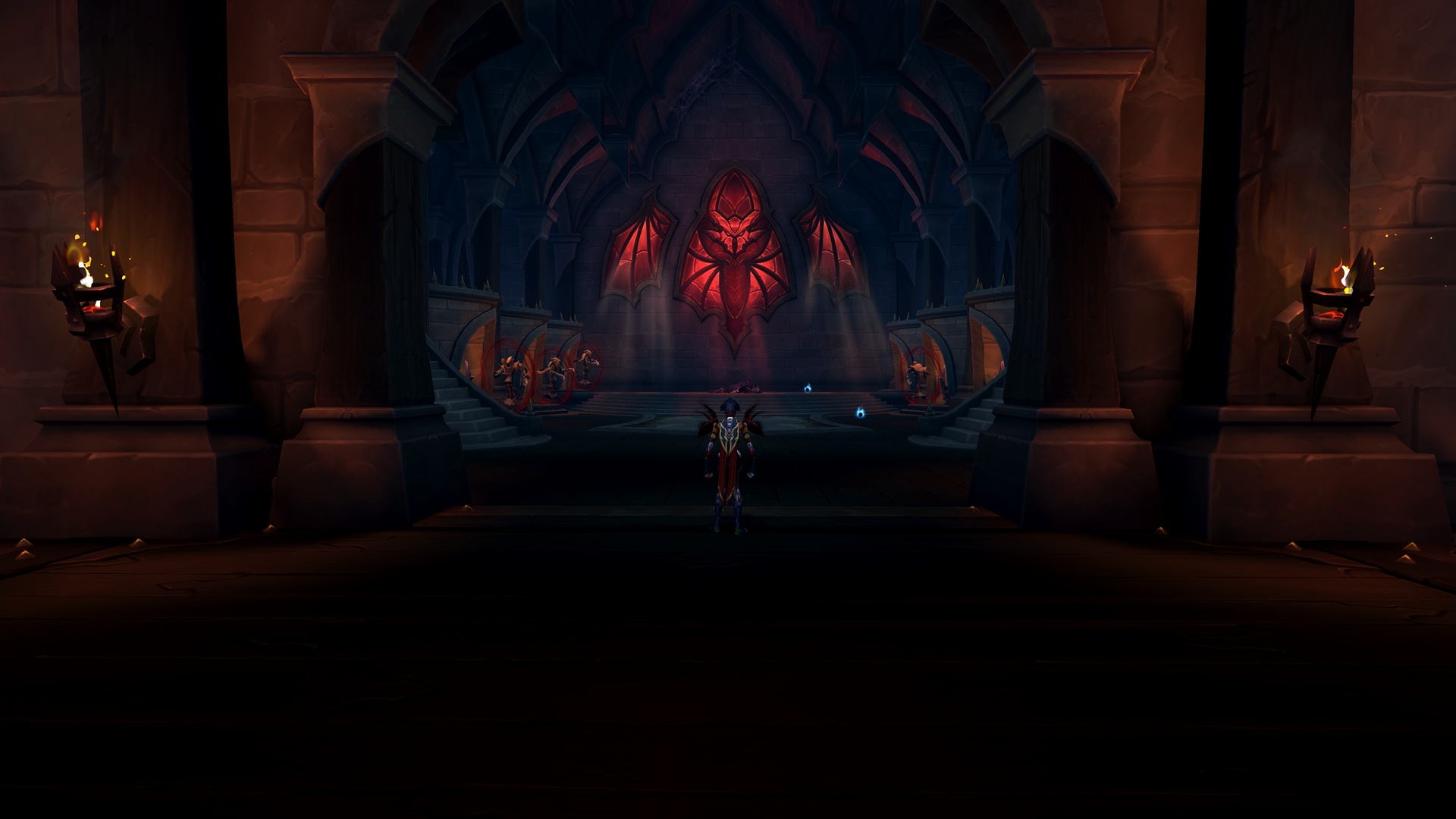
Strange that Player Housing would be the thing to make me take a fresh look at Shadowlands, but I’m glad it did.
Warcraft: Ahead of the Nerub-ar Curve
A very late post, but back in late February we managed to successfully down Heroic Queen Ansurek with one week to spare: Ahead of the Curve is ours!

The Queen fight was a good final boss, and suitably difficult on Heroic (unlike Normal). Each phase took time to learn, and had enough mechanics to keep it interesting and require a good 10 minutes of focus: one slip and it was a wipe. As always seems to happen, on our victory run everything just fell into place, particularly on the final platform. We’d only seen it a few times, wiping shortly after the implosion each time, but the last run our comms were good and everyone reacted and adjusted perfectly. Very satisfying!
I had cold feet Undermine(d) when it was announced, but wanted to give it a fair chance. The intro sequence was tolerable, but as soon as I reached the city of Undermine I was out. It felt too much like an uncomfortable analogue of the real world and not somewhere I wanted to spend time. I want fantasy and escapism, not squalid shanty-towns and petty greed. So I stood down from raiding and let the rest of crew go for it (with great success!).
To fill the time I finished off the Dragonflight meta, principally to earn a very good dog indeed.
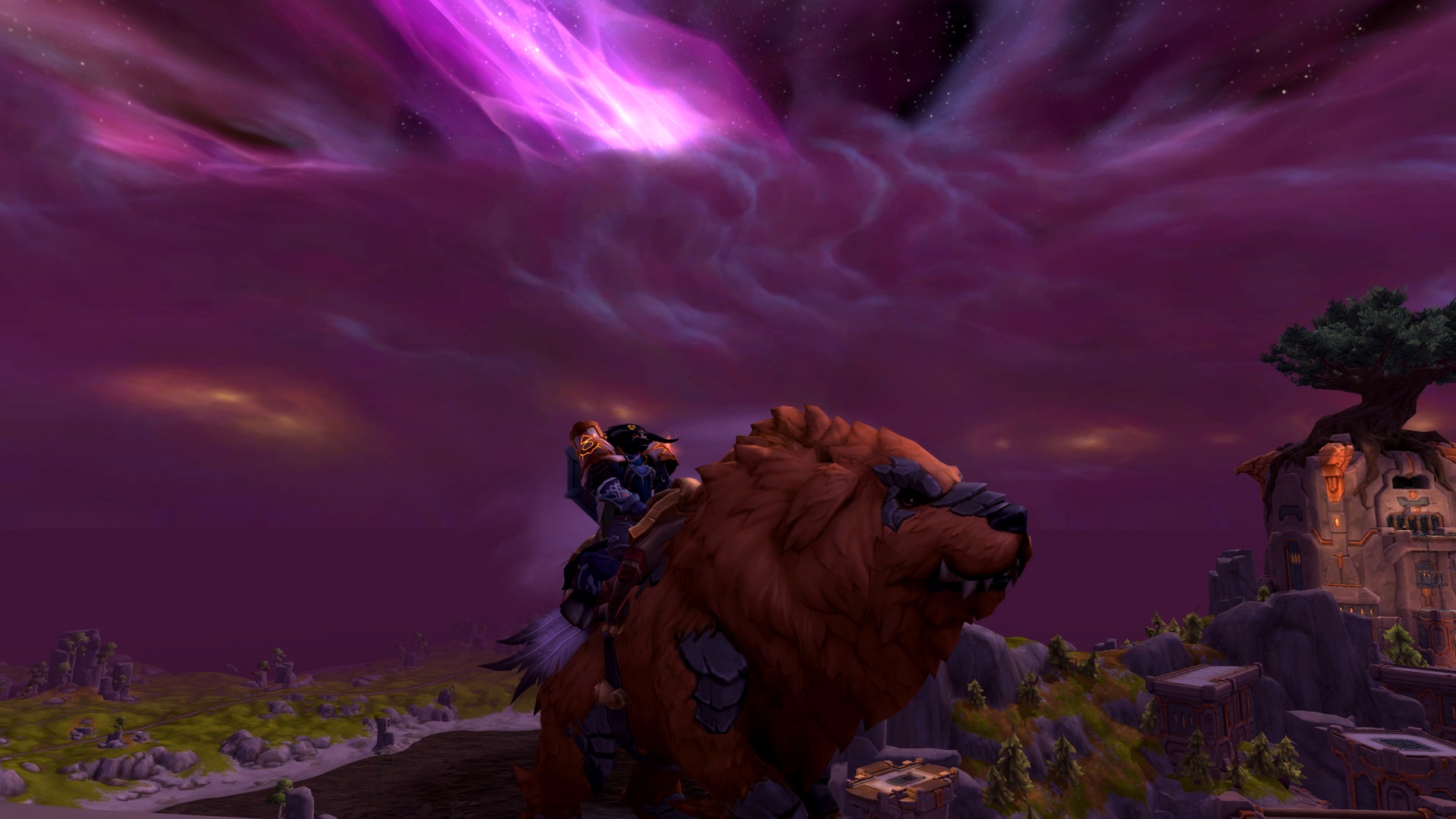
Taivan
It was also fun scooting around Dragonflight again, the zones are all lovely and it was refreshing being outdoors—even the Forbidden Reach was quite fun, despite it being a bit of a dead fish on release. The meta was surprisingly easy to achieve, with only a few long Rep grinds thankfully.
Some of my guild have been working away on the Battle for Azeroth meta instead thanks to the Jani mount that turns you into a Raptor, complete with weapon. I’m sorely tempted but getting 1 million(!) Azerite from Island Expeditions (I think I’ve run…3?) makes me shudder.
For now my Warcraft playtime is almost zero as we wait for 11.2 and what is hopefully a return to epic storytelling and consequential raiding, not just meeting the new boss, same as the old boss.
Warcraft: Nerub-ar Palace complete
After a fairly long break (missing Plunderstorm entirely despite it looking like a fun alternate mode) I jumped back into Warcraft for the War Within. Mainly to raid Nerub-ar Palace of course.
I swapped to Protection Warrior, suiting up one of my original BC characters. He had been sulking for some time having been beaten down by Halls of Reflection back in WotLK. Warrior is very fun, Charging and Heroic Leaping all over the place, and the class fantasy is spot on: a lot of armour, a shield, and a one handed weapon. Even the brown class colour is good (though Paladin pink is still the winner).

We cleared Normal mode without any trouble, one-shotting all the bosses until Silken Court, which took 23—a sudden escalation in difficulty. It was a surprise to one-shot Broodtwister Ovi’nax and Nexus-Princess Ky’veza, having watched how hard they were on Mythic during the RWF, but Normal obviously doesn’t compare. Even Queen Ansurek only took 5 attempts.
I had fun levelling up my boss kill videos this tier, finally graduating from the built-in Windows video editor to DaVinci Resolve. It’s vastly better, and surprisingly not as complicated as I feared. Lots of fun effects and a strong editing timeline, plus finally exporting in HD.
Normal being so easy led to the decision to really push for Heroic this time. It was a shock to find that the first four bosses were also a pushover in Heroic, allowing us to farm two vault slots each week for a month or so to prepare for the last four. Only Bloodbound Horror caused occasional wipes due to random bad mob placement, but the rest were easy-mode.
Luckily the challenge comes with Ky’veza onward. That’s a fun fight, requiring careful gravity management and plenty of precision movement. Still it was only 15 battles over a few weeks before we had her.
Broodtwister was our first real wall, ending up needing 48 attempts. Chaos fights are our weakness, and that one is the definition of chaos—things can get very rapidly out of hand if you miss a single egg-break assignment, or let the small spiders overwhelm you as they multiply. So it was a nice pre-Xmas present to finally kill her on our last raid night of the year.
That leaves Silken Court and Queen Ansurek to finish (before 11.1 in ~March) to claim a guild-fire Ahead of the Curve.
It’s been fun following along with Nogamara’s Heroic progression which is almost exactly mirroring ours. They’re on Silken Court too, and also struggled most with Ovi’nax. Hopefully both guilds will make it to the end before Season 2!

The War Within has been a good expansion so far. As everyone has said, the Warband feature is the standout, making a huge difference to managing multiple characters. Gearing an alt is so much more straight-forward, and the 20th anniversary event has meant levelling a character is lightning-fast.
The zones are fun and different, though I wonder about too much underground after a while. Being out on the Isle and seeing the sky is refreshing after tootling around in the caves for a while.
I love the kobold culture they’ve created, and really wish the Undermine(d) 11.1 patch had been kobolds instead of Goblins. I’m not a fan of the Goblin culture as depicted—environmental vandals with their noisy smoke-belching mounts, money-grubbing, selfish. The kobolds on the other hand are brilliant and fun, with their candles and joy at discovering a piece of junk out in the world.
The expansion does feel a little bit stalled at the moment, despite the launch of Siren Isle (with its lacklustre ring), but Plunderstorm returns in January to distract everyone before Season 2. I’m a little worried by the proposed Prot Warrior rage nerfs, but that’s Warcraft for you—won’t take long to find out. Hm. Maybe I should gear my Paladin and Monk and Druid in the meantime just in case…
